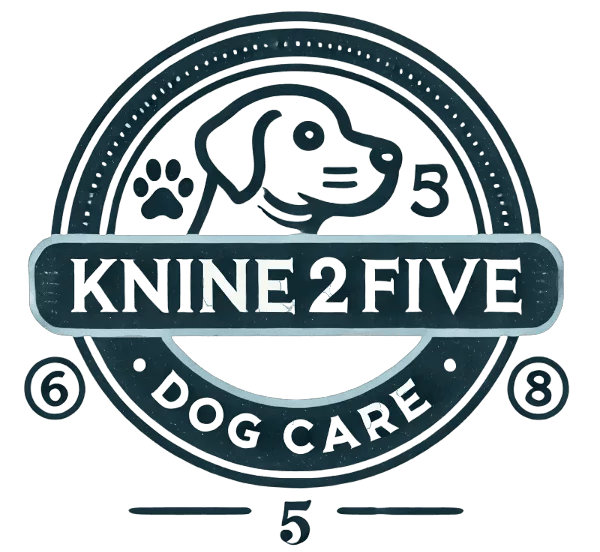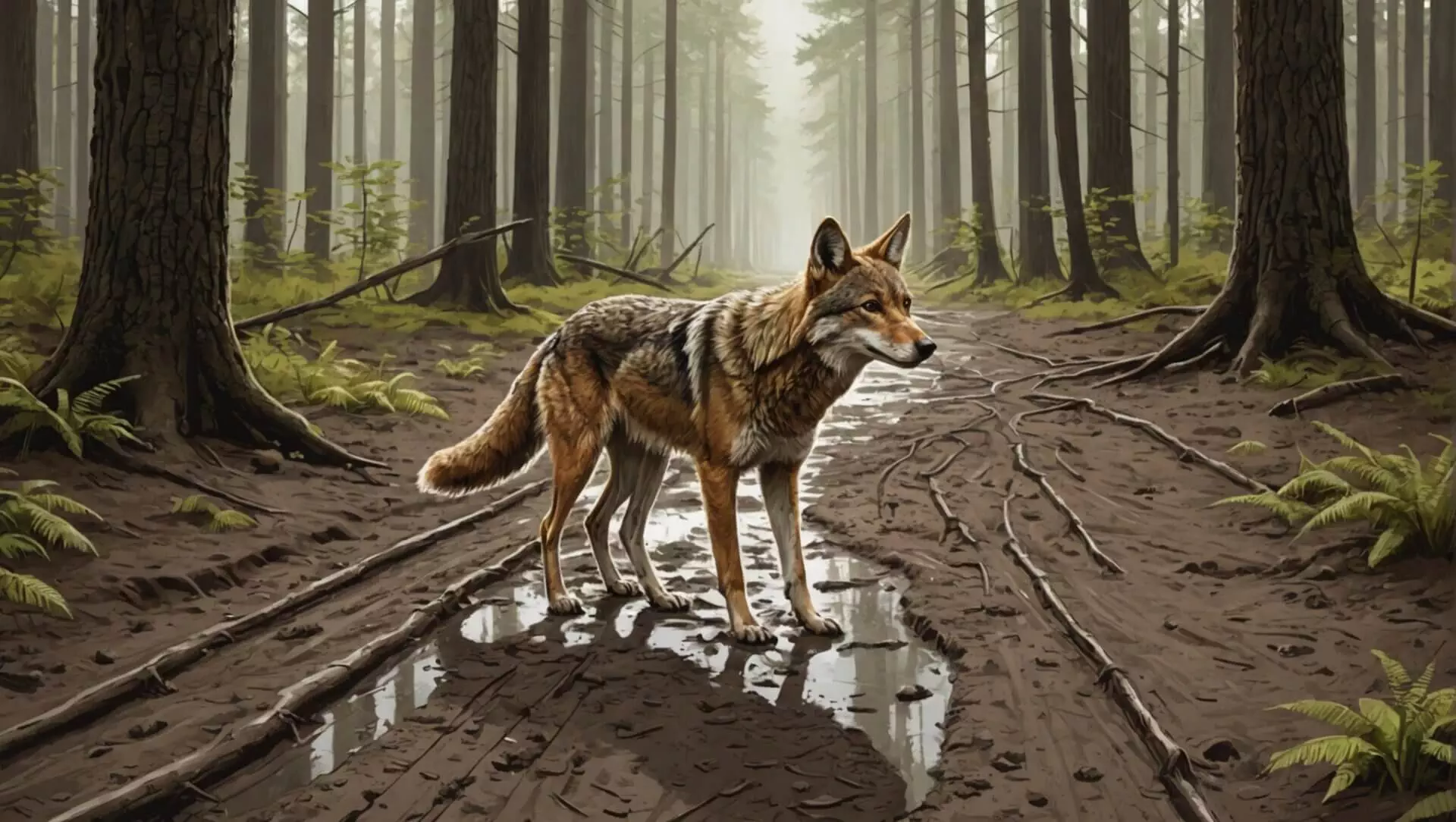Have you ever wondered how to tell if your furry friend or a wild coyote are wandering through your backyard? Understanding the coyote vs dog tracks in mud can be like solving a thrilling mystery! It’s important for dog owners, especially those who love exploring nature, to recognize these tracks. Not only can it help keep your pet safe during outdoor adventures, but it also sparks curiosity about wildlife around us.
If you ignore these signs, you might miss valuable information about local wildlife and potential dangers. In this article, we’ll dive into the unique features of coyote and dog tracks, revealing key differences in size, shape, and behavior. Plus, we’ll share practical tips for tracking these animals in various environments.
So, let’s embark on this exciting journey into the wild and learn how to spot the clues left behind by our four-legged neighbors!
Understanding Coyote and Dog Tracks
What Are Coyote Tracks?
Coyote tracks are usually narrower and oval-shaped, unlike dog tracks, which are rounder. They often show sharp, pointy nails, primarily from the middle two toes. This appearance of coyote tracks can reveal clues about their behavior and movement patterns.
Wildlife enthusiasts should note their elongated shape and less defined claws. The heel pad of a coyote track is wedge-shaped, adding to its unique profile, which helps differentiate it from other animal tracks. [Dogster]
Identifying Dog Tracks
Dog tracks are broader and have a more circular outline. They typically display all four claws more prominently than coyote tracks. This distinct shape allows for easy identification in muddy areas. In contrast, coyote tracks tend to be narrower and longer, often exhibiting a less defined claw structure. When looking for evidence of wildlife in an area, being able to differentiate between these tracks is crucial for understanding the ecosystem. Additionally, it’s important to consider the bait dog definition and implications, as recognizing the tracks of both dogs and coyotes can highlight areas where hunting practices may endanger local wildlife or indicate human intervention in natural behaviors.
Dog tracks can vary based on breed, as some dogs, like the German Shepherd, have larger or uniquely shaped paws. Dogs often leave deeper impressions on soft ground, helping enthusiasts recognize them quickly. The rounder shape can be a clear indicator of a domestic dog rather than a wild canine. [Christine DeMerchant]
What Distinguishes Tracks in Mud?
Mud is essential for tracking wildlife as it keeps the shape of the tracks, making identification easier. The depth of tracks can vary based on the animal’s weight and the mud’s softness. In softer mud, tracks appear larger and more detailed, while firmer mud may show less defined tracks.
Observers should pay attention to these details, as they can provide insights into the animal’s health and behavior.
| Feature | Coyote Tracks | Dog Tracks |
|---|---|---|
| Shape | Narrow, oval | Broad, circular |
| Claw Visibility | Less pronounced | All claws visible |
| Heel Pad Shape | Wedge-shaped | Rounded |
| Average Length | 2.5 to 3 inches | Varies, usually larger |
Key Takeaways
- Coyote tracks are narrower with sharper claws; they are identifiable by their unique shape.
- Dog tracks are broader and show all claws clearly, which helps in identifying them in muddy areas.
As you learn more about these tracks, you can also explore how to tell the difference between dog and coyote tracks more effectively.
Key Differences Between Dog and Coyote Tracks

The Anatomy of Coyote Tracks
Coyote tracks have distinct features. They are more oval and narrower than dog tracks, which are rounder. Coyote paw prints often show two clear claw marks on the middle toes. In contrast, dog tracks usually display four visible claw marks.
Coyote tracks measure about 2.5 to 3 inches. Dog tracks vary depending on the breed. They typically range from 2 to 4 inches.
Anatomy of Dog Tracks
Dog tracks showcase their own unique traits. They are more circular, with pronounced toenail marks. These marks are often clearer than those of coyotes. The pads of a dog’s paw are more rounded and can show a wider spread of toes. This distinct shape helps differentiate dog tracks from those of other animals in the wild. Observing these traits can be especially useful for pet owners or trackers trying to identify recent visitors. Understanding dog behavior, such as identifying “dog scratching floor reasons,” can also provide valuable insights into their instincts and habits.
The size and shape of dog tracks can vary significantly among breeds. Larger breeds, like German Shepherds, leave bigger and wider tracks. Smaller breeds will leave smaller tracks, making breed consideration crucial when identifying tracks.
How to Measure Track Prints
Accurate measuring is important for proper identification. Use a ruler or measuring tape to check both the length and width of the track. It’s best to focus on the widest part for accurate results. This technique helps in distinguishing coyote vs dog tracks in mud.
The depth of the track can provide clues about the weight of the animal. Deeper tracks often suggest a heavier animal, which is helpful in tracking through muddy conditions.
Key Points
- Coyote Tracks: Oval and narrower with fewer visible claw marks.
- Dog Tracks: Rounder and variable among breeds.
- Measuring Techniques: Essential for size and depth differentiation.
| Track Type | Shape | Size Range (inches) | Claw Marks Count |
|---|---|---|---|
| Coyote | Oval | 2.5 to 3 | 2 (middle toes) |
| Dog | Round | 2 to 4 | 4 (all toes) |
How to Tell the Difference Between Dog and Coyote Tracks
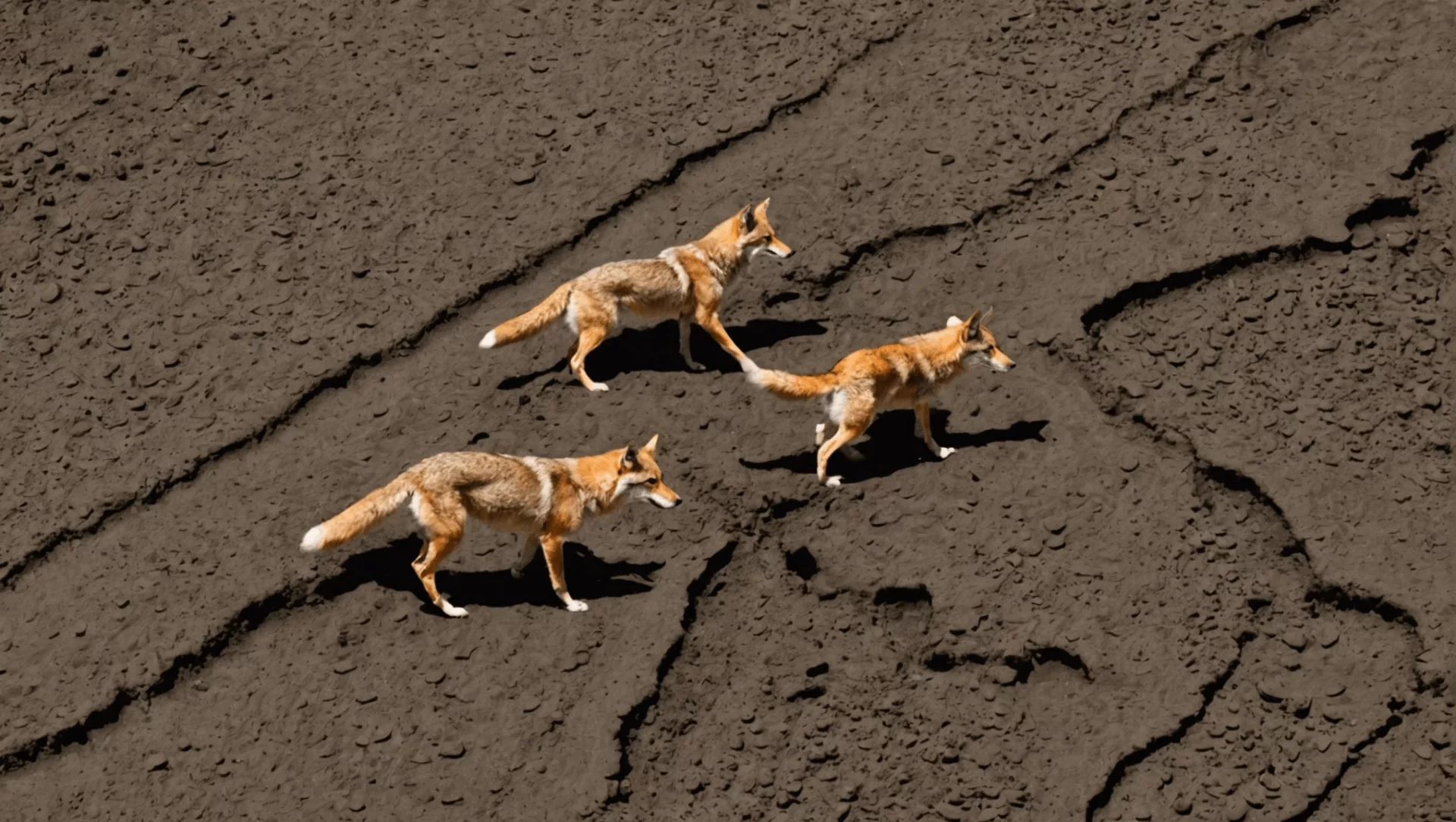
Notable Size Differences
Coyote and dog tracks have obvious size differences that help with identification. Coyote tracks are usually narrower and more oval-shaped. They typically measure between 2.5 to 3.5 inches (6.35 to 8.89 cm) and 2 to 3 inches in width (5.08 to 7.62 cm). In contrast, dog tracks are rounder and wider, often measuring 3 to 4 inches (7.62 to 10.16 cm) and 3 to 4 inches in width (7.62 to 10.16 cm) (Source: Dogster).
To visualize these differences, refer to the table below:
| Track Type | Length (inches) | Width (inches) |
|---|---|---|
| Coyote | 2.5 – 3.5 | 2 – 3 |
| Dog | 3 – 4 | 3 – 4 |
Knowing these measurements can make spotting the right track easier during hikes or outdoor activities.
Distinctions in Claws and Pads
The claws and pads of coyote and dog tracks also differ significantly. Coyote tracks often show two middle claws distinctly and can have a more elongated shape with splayed toes. This splaying allows for better movement in soft mud or sand. Dogs usually exhibit well-defined claw marks for all four toes, arranged in a more circular layout. Their tracks are more compact compared to coyotes (Source: Christine Demerchant).
Here are some key features about claws and pads:
- Coyote Tracks:
- Two middle claws are often visible.
- Elongated shape with splayed toes.
- Dog Tracks:
- Claw marks for all four toes are usually clear.
- More circular and compact layout.
Tracking Behavior of Dogs vs. Coyotes
The behavior of coyotes and dogs while moving can influence the appearance of their tracks. Coyotes walk with a more deliberate gait. Their tracks can appear spaced out because they are often solitary or travel in small family groups. In contrast, dogs may leave more erratic patterns. Their playful nature leads them to run and jump, resulting in varied track sizes and shapes (Source: Quora).
Key behaviors to note include:
- Coyotes:
- Move with a steady, spaced-out gait.
- Primarily solitary or in small family groups.
- Dogs:
- Exhibit playful, erratic movements.
- Tracks may vary in size because of running and jumping.
Recognizing these tracking behaviors can enhance the understanding of wildlife in various habitats, making outdoor adventures more engaging.
Comparing Coyote Tracks to Other Wildlife
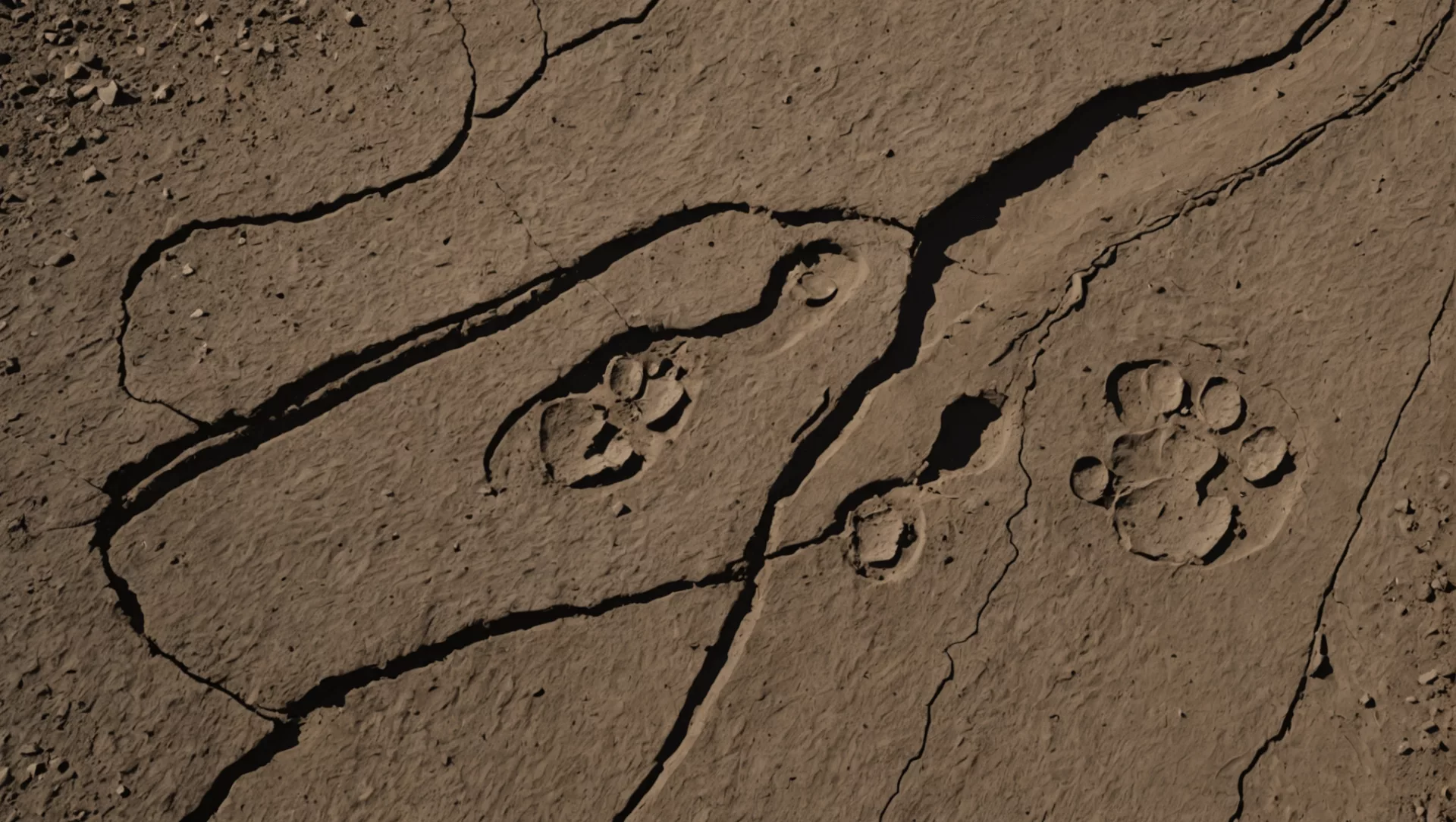
How to Differentiate Coyote from Wolf Tracks
Coyote tracks can easily be mixed up with wolf tracks, but they have key differences. Wolf tracks are larger, measuring about 4 to 5 inches long. In contrast, coyote tracks average around 2.5 to 3 inches. Wolves also show more defined claw marks, making their prints stand out.
Coyote tracks are usually narrower and less rounded. They might show only the middle two claws, giving them an elongated look. Wolf tracks typically display all four claws. Wolves walk with a steadier gait, leading to less space between their tracks than the varied spacing seen in coyote tracks. [Wildlife Illinois]
Understanding Other Canine Tracks
When comparing coyote tracks to other canines like foxes, there are important differences. Fox tracks are smaller, measuring about 1.5 to 2 inches long. They also have a more delicate appearance, with narrower shapes and less defined claw marks.
Coyotes have broader pads, making their tracks easier to identify. Domestic dog tracks can vary widely in size depending on the breed. For instance, a German Shepherd’s tracks can be similar in size to a coyote’s but usually have more distinct claw marks and a rounder shape.
Coyote Tracks vs. Fox Tracks
Coyote and fox tracks have notable differences that help in identification. The average coyote track is about 2.5 to 3 inches long, while fox tracks are only about 1.5 to 2 inches long. Coyote tracks are more oval-shaped and can show the middle claws prominently.
In contrast, fox tracks are rounder and display less claw definition. This makes coyote tracks appear more elongated and narrower. When observing tracks in soft mud, the differences between these two species become clearer, as the impressions left behind keep detailed shapes.
Summary Table: Comparison of Tracks
| Feature | Coyote Tracks | Wolf Tracks | Fox Tracks |
|---|---|---|---|
| Size | 2.5-3 inches | 4-5 inches | 1.5-2 inches |
| Shape | Narrower, oval | Larger, more rounded | Smaller, delicate |
| Claw Visibility | Middle claws visible | All claws defined | Less pronounced claws |
| Track Spacing | Varied spacing | Closer spacing | Moderate spacing |
Key Points
- Coyote tracks are narrower and more oval compared to dogs and wolves.
- Wolf tracks are larger, with more defined claw marks.
- Fox tracks are smaller with a delicate shape.
Practical Tips for Readers
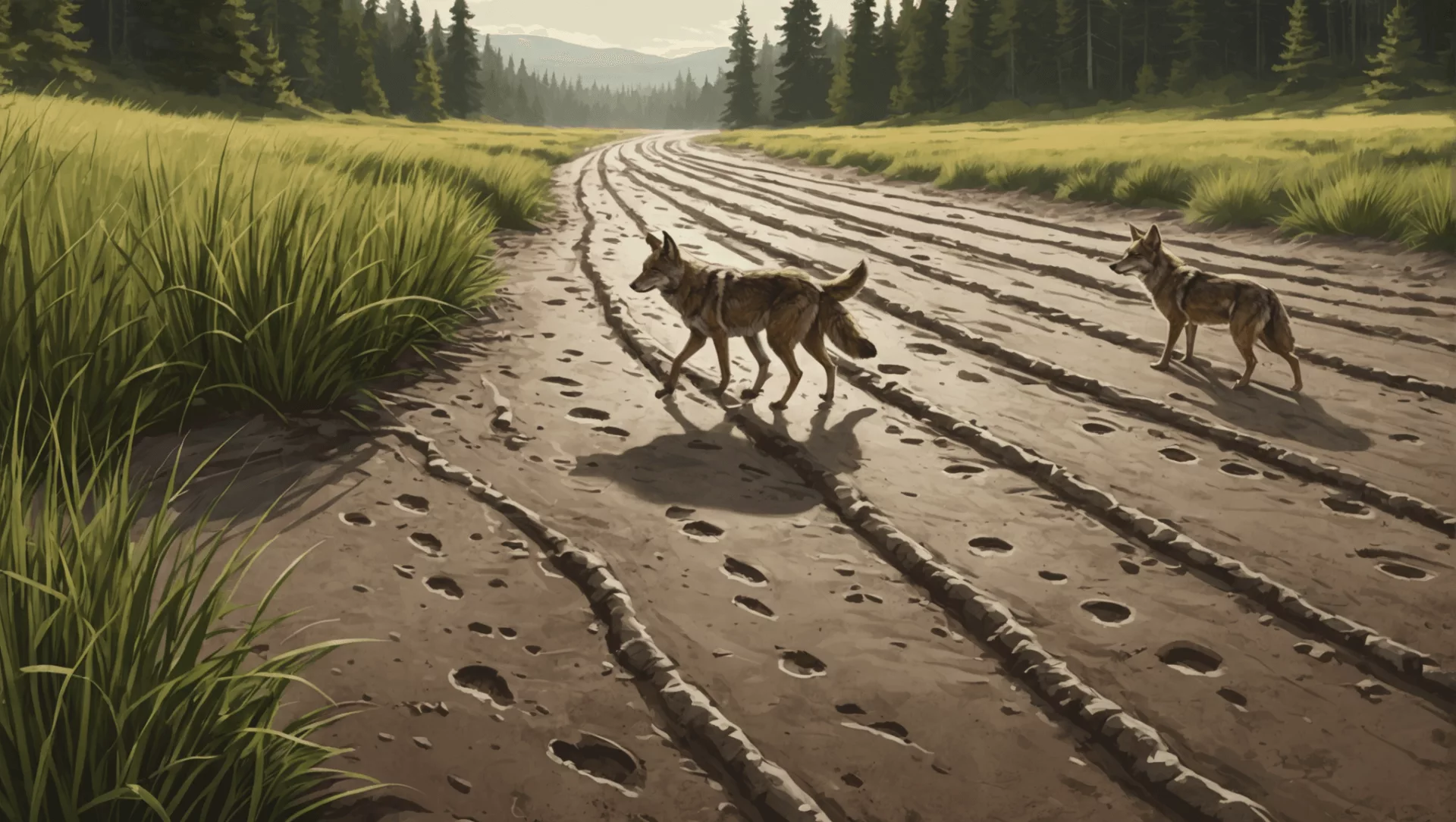
Observing Tracks in Unfamiliar Environments
When exploring the outdoors, observing tracks offers insights into local wildlife. Coyote tracks are narrower and more oval-shaped. In contrast, dog tracks are rounder. In muddy conditions, these differences become clearer, as the mud captures the shapes distinctly.
Look for specific features when identifying tracks. For example, coyote tracks may show only the middle claws. Meanwhile, dog tracks typically reveal all four claws. These details are crucial for distinguishing between coyote and dog tracks.
To maximize your tracking experience, consider the environment. Different terrains, like soft mud or wet sand, affect the clarity of the tracks. Observers should take their time, as an empty track can show the animal’s behavior.
| Track Type | Shape | Claw Visibility | Average Size |
|---|---|---|---|
| Coyote Tracks | Oval | Middle claws visible | Smaller than dogs |
| Dog Tracks | Round | All claws visible | Larger than coyotes |
Tools for Track Identification
Identifying tracks is easier with the right tools. A tracking guidebook specific to local wildlife is invaluable. These books contain images and descriptions that help differentiate tracks. For example, coyote tracks are often smaller than many domestic dog tracks.
Online resources can also enhance your identification efforts. Websites and forums provide visual comparisons and community advice. Social media can connect novice trackers with experienced ones, offering valuable insights.
Recommended tools include:
- Field Guide Books: Local wildlife guides that include animal tracks.
- Mobile Apps: Apps designed for tracking wildlife with visual aids.
- Community Forums: Online spaces dedicated to wildlife tracking for tips and shared experiences.
Safety Tips When Tracking Wildlife
Safety is paramount when tracking wildlife. Always keep a safe distance from animals. Coyotes can appear curious but may react defensively if threatened. It’s essential to respect their space.
Tracking should ideally be done in groups. Having a buddy enhances safety, especially in areas known for wildlife. If one person encounters danger, the other can assist or seek help.
Key safety tips include:
- Stay Alert: Be aware of your surroundings when tracking.
- Avoid Dens: Never approach known dens or feeding areas, as animals may feel protective.
- Keep Noise Levels Down: Loud noises can scare wildlife and disrupt natural behavior.
By following these practical tips, individuals can safely observe and identify coyote vs dog tracks in mud. This enhances the tracking experience and fosters greater respect for the wildlife in these areas.
Conclusion
In conclusion, understanding the differences between dog and coyote tracks can be an exciting adventure! We learned that coyote tracks are often larger and have distinct claw shapes, while dog tracks can vary based on the breed. Observing the environment where the tracks are found can provide clues about whether they belong to a wild coyote or a domestic dog.
Remember, tracking wildlife like coyotes can teach us a lot about their behavior and habits. So, grab your gear, head outside, and explore the amazing world of animal tracks! Who knows what you might discover next?
